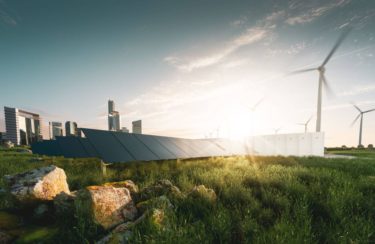Onshoring and sustainability will guide the future of supply chains


Onshoring has certainly been a discussion point for a number of years, with tentative moves in some quarters.
That said, the likelihood of it gaining much momentum was relatively slim up until recently. The prevailing wisdom was that large-scale onshoring was unlikely. In fact, a study from supply chain analyst firm SCM suggested many attempts at what it termed reshoring were symbolic at best.
However, the disruption wrought firstly by the US-China trade war and then, more drastically, by the coronavirus pandemic has caused many businesses to relook at their supply chains. In particular, they are reconsidering how resilient their supply networks actually are and asking whether they are truly fit for purpose.
At the same time, leadership teams are wrestling with the need to cut costs in order to protect what margin they can. Bringing different parts of the supply chain closer to home, and therefore siting them in economically developed countries, may at first glance seem at odds to a money-saving goal, but if it reduces risk and improves the likelihood of goods arriving where they need to be, when they need to be there, then it may actually contribute to improved performance across the business.
There may even be unintended but consequential environmental benefits. Ordinarily, sustainability efforts would be first on the chopping board when budgets needed to be reduced, but as one company has demonstrated, reducing the risk in supply chain could also have a welcome impact on carbon emissions.
Innocent Drinks had already put plans in place pre-pandemic to consolidate much of its processing and bottling in Rotterdam, which was also its main port of choice.
In doing so, this would enable the company to save over 250 road tanker journeys a week, ultimately taking 93% of its tankers off the road. Not only will that have a dramatic reduction on its supply chain emissions, but the state-of-the-art factory will also be carbon neutral, adding to the company’s overall sustainability credentials.
As the company’s own CEO said, part of the reason for the move was to bring its manufacturing network closer together. While not immediately associated with it, the supply chain simplification and consolidation, coupled with the reduction in transit times, will improve resilience.
Would it have been cheaper for Innocent Dirnks to continue processing in one country, bottling in another, distributing in a third? Potentially, yes. There’s the much-used example of the fish caught in Scotland, shipped to Asia for skinning and boning, before going back to Scotland to be sold. Network design is fraught with complex trade-offs and when we take a conscious look at our supply networks, there can often be a better balance. Innocent Drinks is proof that such a balance can be commercially viable.
In other industries, such as fashion, the primary driver of offshoring has been cheaper labour costs. But with labour costs in China continuing to rise, nearshoring is becoming more feasible, especially for companies with an eye on sustainability. There is obviously significant inertia in supply chains due to investments in plants and infrastructure, plus companies need to consider the availability of skilled resources in potential locations, available shipping lanes, and tax considerations. But boardrooms around the world are beginning to re-examine nearshoring as resilience and sustainability gain importance.
So, are we heading back to a locally grown, locally sourced supply chain with minimal carbon footprint? This may be so but there will still be a need for global supply chains. What we will likely see more of are businesses such as Innocent looking at ways to improve resilience, reduce complexity and improve sustainability – for instance by bringing all manufacturing stages closer together.
In doing so, they will simplify and shorten certain parts of their supply chains, particularly transportation. This will contribute to improved resilience), and, as the Innocent example demonstrates, will also create a naturally sustainable by-product, with a reduction in emissions and carbon footprints.
As businesses seek to bolster their supply chains, greater sustainability could come to the fore or be a beneficiary. In other words, they may be able to build a more resilient supply chain that is also more sustainable.